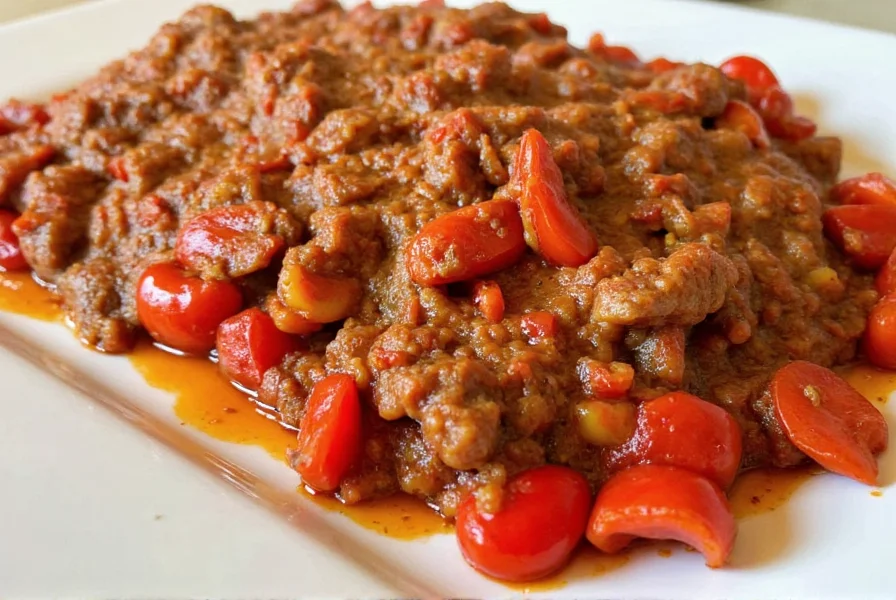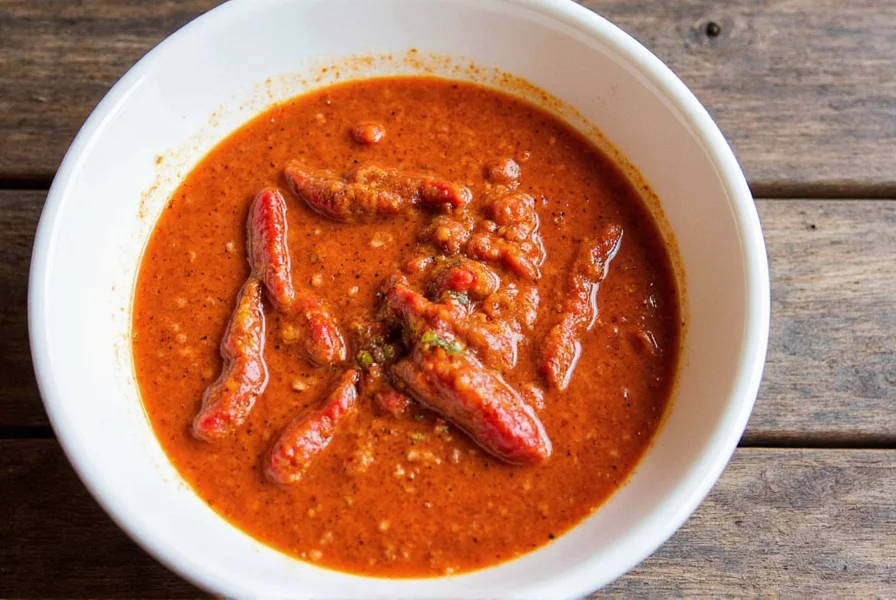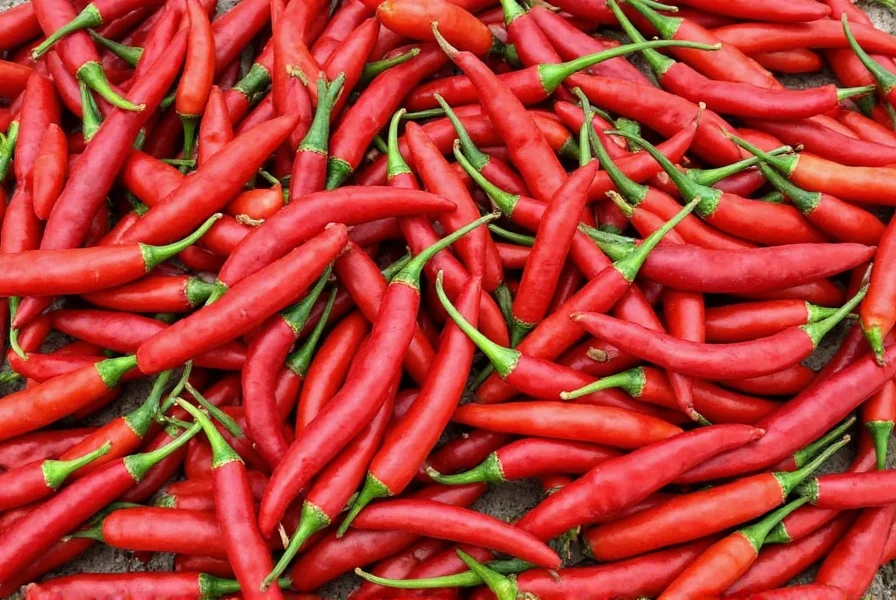Chile Seco California, also known as dried Anaheim chili, is a mild, versatile pepper widely used in Mexican and Southwestern cuisine. This guide provides comprehensive information on its flavor profile, culinary uses, buying tips, storage methods, and recipe ideas to help you master this essential ingredient.
Table of Contents
- What Is Chile Seco California?
- Flavor Profile & Heat Level
- Common Uses in Cooking
- Buying Guide: Choosing the Best Chile Seco California
- How to Store Dried Chiles
- Recipe Ideas Using Chile Seco California
- Comparing Chile Seco California with Other Popular Dried Chiles
- Frequently Asked Questions
- Final Thoughts
What Is Chile Seco California?
The chile seco California is the dried form of the Anaheim chile, a mild green bell pepper-like variety originally grown in New Mexico but later popularized in California—hence its name. It's commonly used in Mexican and Southwestern U.S. cuisine for both its moderate heat and earthy flavor. Once dried, it becomes a flexible ingredient that can be rehydrated and stuffed, ground into powder, or simmered into sauces.
| Chile Name | Heat Level (SHU) | Flavor Notes |
|---|---|---|
| Chile Seco California | 500–2,500 | Mild, herbal, nutty |
| Ancho | 1,000–2,000 | Fruity, sweet, deep |
| Guajillo | 2,500–5,000 | Berry, tea-like, tangy |
| Cayenne | 30,000–50,000 | Sharp, peppery, intense |
Origins and Popularity
Bred by horticulturist Fabian Garcia in 1896, the original Anaheim chile (named after the city in California where it gained popularity) was developed for its mildness and ability to adapt to various climates. Today, it remains one of the most widely used peppers in American-Mexican dishes like chiles rellenos, enchilada sauces, and salsas.
Flavor Profile & Heat Level
When you first smell a chile seco California, you might notice hints of grassiness, dried herbs, and a subtle nuttiness. Its heat level falls on the lower end of the Scoville scale, typically ranging from 500 to 2,500 SHU (Scoville Heat Units), which makes it a perfect choice for those who want to add depth without overwhelming spice.
When to Use It
- For mild to medium-spiced dishes
- As a base for sauces where you want flavor more than fire
- In dishes where a slightly sweet or herbaceous undertone complements other ingredients
Common Uses in Cooking
Because of its versatility, the chile seco California is a go-to ingredient in a wide array of recipes:
- Rehydration & Stuffing: Soak in hot water until soft, then stuff with cheese or meat for classic chiles rellenos.
- Blended Sauces: Puree rehydrated chiles with garlic, onions, and spices for a smooth sauce ideal for enchiladas or tamales.
- Dry Rubs: Ground into powder, it adds a gentle kick to rubs for grilled meats or roasted vegetables.
- Soups & Stews: Toss a whole dried chile into a simmering pot for background heat and complexity.

Buying Guide: Choosing the Best Chile Seco California
Not all dried chiles are created equal. Here's what to look for when purchasing chile seco California:
Appearance
- Bright Color: Look for vibrant red or reddish-brown chiles—dull or cracked skins suggest old age.
- Texture: They should feel slightly pliable but not brittle or powdery.
Packaging
- Air-Tight Bags: Chiles sold in sealed bags preserve freshness longer than bulk bins.
- Label Info: Check for origin (Mexican vs. US-grown) and whether preservatives have been added.
Popular Brands to Try
Here's a quick comparison of top brands that offer quality chile seco California:
| Brand | Origin | Features | Best For |
|---|---|---|---|
| La Costeña | Mexico | Consistent color and texture; often used in canned goods | Enchilada sauces, soups |
| Goya Foods | USA | Wide availability; good for everyday cooking | General use in stews and salsas |
| Ranch Direct | New Mexico/California | Organic, non-GMO; great flavor depth | Specialty dishes and gourmet meals |
How to Store Dried Chiles
Proper storage keeps your chile seco California fresh and flavorful for months. Here's how to do it right:
- Air-Tight Containers: Transfer from packaging to jars or plastic bags with tight seals.
- Dark Place: Keep away from sunlight to prevent fading and loss of flavor.
- Freezing: If you won't use them within six months, store in the freezer to lock in aroma and oils.

Recipe Ideas Using Chile Seco California
Ready to put your chile seco California to work? Here are some crowd-pleasing ideas:
Classic Chile Relleno Casserole
- Soak chiles in warm water until softened
- Stuff with cheese or tofu
- Bake with egg batter and a light tomato sauce
Smoky Enchilada Sauce
- Toast dried chiles lightly
- Blend with garlic, onion, cumin, and tomatoes
- Simmer until thickened and pour over corn tortillas
California Chile Oil
- Crush dried chiles and toast gently in oil
- Add garlic, salt, and citrus zest
- Use as a drizzle for noodles, rice, or grilled veggies

Comparing Chile Seco California with Other Popular Dried Chiles
While the chile seco California is beloved for its mild heat and clean flavor, how does it stack up against other dried chiles you might find in your pantry? Let's compare:
| Chile Type | Heat Level | Best For | Substitution Tip |
|---|---|---|---|
| Chile Seco California | Mild to Medium | Chiles rellenos, sauces, soups | Can substitute with ancho for milder flavor |
| Guajillo | Medium | Tamales, marinades, moles | Pair with California chile to reduce overall heat |
| Morro | Very Hot | Salsas, pickling, spicy oil | Only use half amount if substituting for California |
| Pasilla | Mild to Medium | Moles, sauces, braises | Similar flavor profile; interchangeable in most dishes |
Frequently Asked Questions
Final Thoughts
The chile seco California may not pack the punch of its spicier cousins, but what it lacks in heat, it more than makes up for in flavor versatility. Whether you're just getting into dried chiles or looking for a reliable workhorse for your kitchen, this little red gem deserves a spot in your spice rack. From sauces to snacks, it's the quiet hero that brings balance, warmth, and a whisper of sweetness to every bite.

So next time you're at the market or planning your next meal prep, don't overlook the humble chile seco California. A pinch here or a soaked pepper there could be the secret ingredient your dish has been missing.











 浙公网安备
33010002000092号
浙公网安备
33010002000092号 浙B2-20120091-4
浙B2-20120091-4